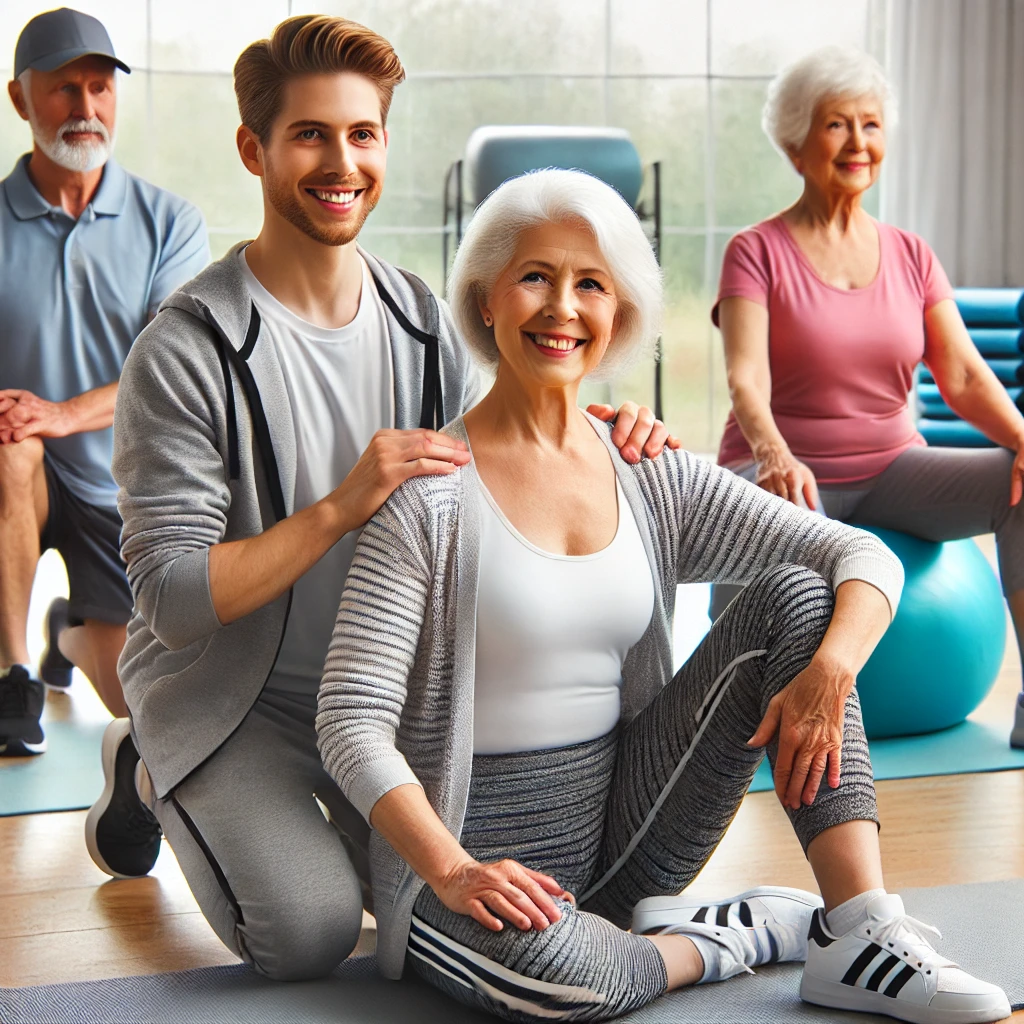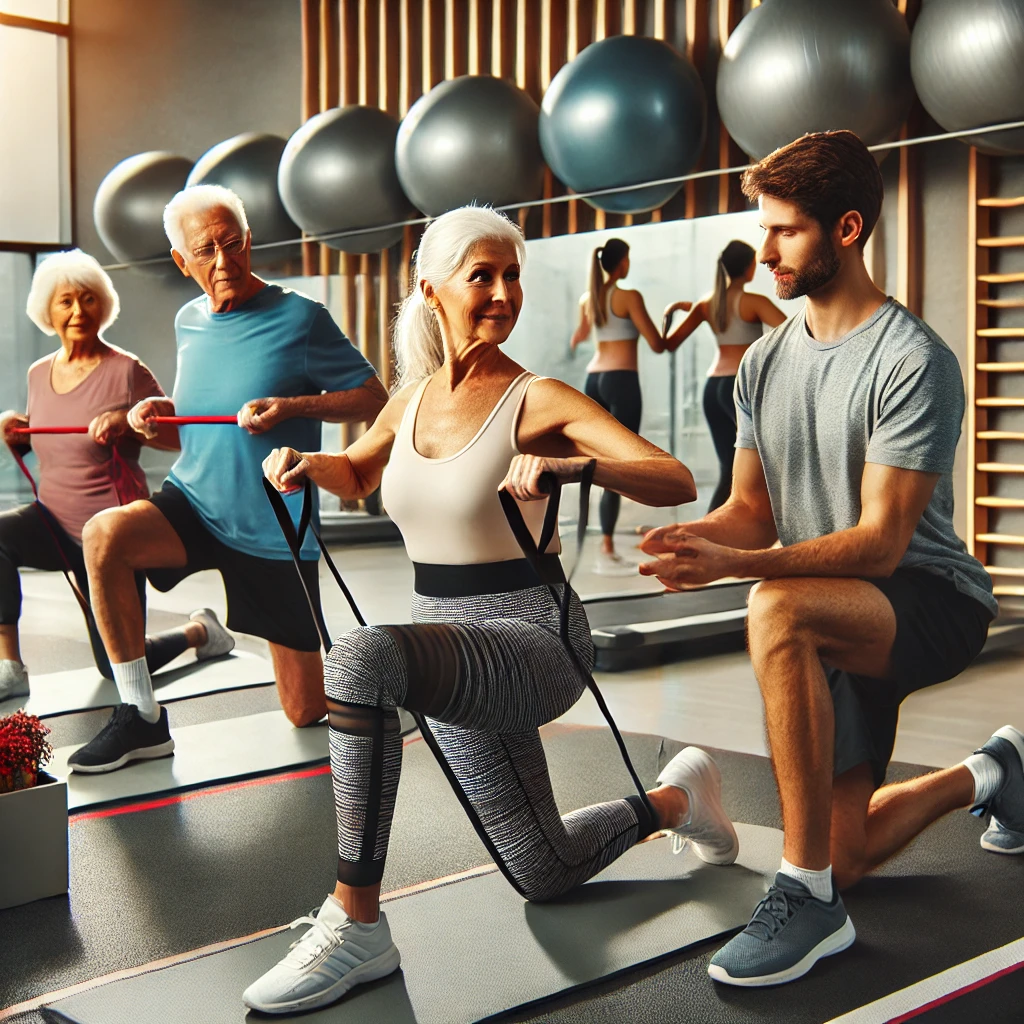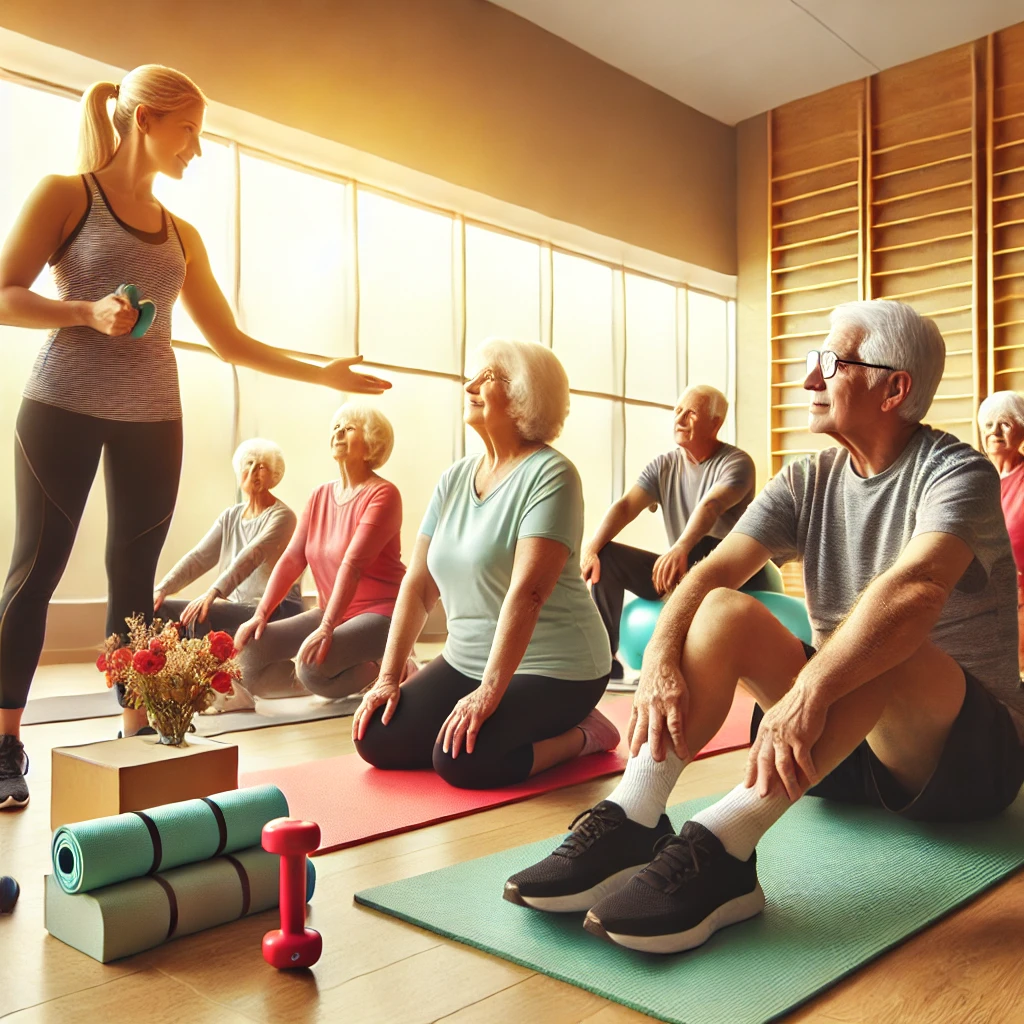Table of Contents
Understanding the Importance of Safe Workouts
For seniors, prioritizing safety in workout routines is crucial. Engaging in regular exercise offers numerous benefits, including enhanced physical health, improved mental well-being, and increased opportunities for social interactions. Physical activity can help older adults maintain muscle strength, flexibility, and balance, which are vital for reducing the risk of falls and injuries—common concerns among the elderly. In addition to these physical benefits, consistent engagement in exercise has been linked to improved mood, decreased feelings of anxiety, and enhanced cognitive function.
Moreover, social engagement often accompanies many exercise programs, fostering connections with peers that can lead to increased motivation. Group activities or community classes enable seniors to bond over shared goals and establish friendships, which can combat feelings of isolation and loneliness. However, it is essential to recognize the unique risks that seniors face when exercising. Age-related changes in muscle mass, joint flexibility, and overall health may predispose older adults to injuries if proper precautions are not taken.
Before embarking on a new fitness regime, consulting healthcare professionals is highly recommended. A thorough assessment by a physician can help identify any pre-existing conditions or limitations that may influence an individual’s ability to exercise safely. Tailoring a workout plan to accommodate these factors can lead to more successful outcomes and minimize the risk of injury. Furthermore, healthcare providers can suggest appropriate types of exercise, such as low-impact activities that are gentler on the joints and more suitable for seniors. Therefore, the significance of establishing a safe and effective workout routine cannot be overstated, as it is pivotal in ensuring that older adults reap the numerous benefits of physical activity while minimizing potential hazards.

Common Exercise Pitfalls Seniors Should Avoid
As seniors engage in physical activity to enhance their health and well-being, it is crucial to identify and avoid common exercise pitfalls that could jeopardize their safety and effectiveness. One of the most frequent mistakes is skipping warm-up exercises. A proper warm-up increases blood flow to muscles and prepares the body for more strenuous activities. Neglecting this vital step may lead to injuries such as strains or sprains, diminishing the benefits of the workout.
Another significant pitfall is overexertion. Many seniors may feel motivated to push themselves too hard, especially if they have experienced a previous fitness level. This can result in fatigue, decreased performance, or even more severe health issues, such as heart strain. It is essential for seniors to listen to their bodies and progress gradually. Setting realistic, achievable goals based on personal capabilities fosters a safer workout environment.
Balance training is often overlooked but plays a critical role in a senior’s exercise routine. Many seniors mistakenly believe that general strength training is sufficient. However, neglecting exercises that focus on balance can increase the risk of falls, which can have serious consequences, including fractures and extended recovery times. Simple activities like heel-to-toe walks or practice standing on one leg can greatly enhance stability and overall confidence during daily activities.
In addition to these pitfalls, seniors might also disregard proper hydration and nutrition, which are crucial for supporting an active lifestyle. Dehydration and poor dietary choices can hinder performance and recovery, making it harder to maintain a regular exercise routine. By recognizing and avoiding these common exercise pitfalls, seniors can ensure a safer and more effective workout experience, ultimately leading to improved health outcomes.
Best Practices for Safe Workouts
For seniors, engaging in regular exercise is vital to maintaining overall health and well-being. However, adopting best practices during workouts can significantly enhance safety and effectiveness. One fundamental aspect of a safe workout regimen for seniors is the incorporation of appropriate warm-up and cool-down techniques. Warm-ups gently prepare the body for physical activity, promoting flexibility and reducing injury risks. Setting aside at least 5-10 minutes for light aerobic activities, such as walking or gentle stretching, can greatly benefit the body’s transition into more strenuous exercises. Similarly, post-exercise cool-downs involving slow movements and stretching help the body recover and can alleviate soreness.
Choosing exercises that promote strength and flexibility is also crucial. Low-impact activities, such as swimming, cycling, or yoga, are excellent options for seniors. These exercises not only strengthen muscles but also enhance joint flexibility, contributing to overall mobility. Incorporating resistance training into weekly routines—using either light weights or resistance bands—can improve muscle strength and bone density, essential for reducing the risk of falls and fractures. It is advisable for seniors to consult with healthcare professionals or certified fitness instructors to design a tailored workout plan that meets their individual needs and capabilities.
Hydration is another key element of safe workouts. Seniors should make a conscious effort to drink water before, during, and after exercising, as the body requires adequate hydration to function optimally. Dehydration can lead to fatigue, dizziness, and even serious health complications. Furthermore, the environment in which one exercises significantly impacts safety. It is recommended to choose well-lit, spacious areas free from hazards, ensuring ample room for movement without risk of tripping or falling.
Finally, selecting the right equipment, such as supportive footwear and any necessary assistive devices, can further minimize the risk of injury. Prioritizing safety during exercise will not only promote longevity but allow seniors to enjoy the numerous benefits of an active lifestyle.
Creating a Personalized Workout Plan
Creating a personalized workout plan is essential for seniors looking to maintain or improve their fitness levels while prioritizing safety. The first step in this process is to set realistic goals tailored to individual capabilities. These goals should be specific, measurable, achievable, relevant, and time-bound (SMART). For example, instead of an ambiguous objective like “get fit,” a more concrete goal could be “walk 30 minutes at least three times a week for the next month.”
Incorporating varying forms of exercise into the plan is crucial for balanced fitness. A well-rounded regimen should include cardiovascular activities, strength training, flexibility exercises, and balance work. Cardio workouts, like walking or swimming, can improve heart health and endurance. Strength training, using resistance bands or light weights, helps in maintaining muscle mass and enhancing metabolism. Flexibility exercises, such as stretching or yoga, are vital for preventing injuries and improving overall mobility. Lastly, balance exercises, which may include tai chi or simple standing exercises, are essential for reducing the risk of falls, a common concern among seniors.
Consulting with a professional trainer or physical therapist can further enhance the effectiveness of a personalized workout plan. These experts can assess individual fitness levels, provide tailored exercise recommendations, and ensure proper technique to maximize benefits and minimize injury risks. They may also recommend adapting specific exercises based on any health conditions or limitations one may have.
Empowering seniors to take control of their fitness journey involves creating a structured plan that resonates with their unique needs and preferences. By thoughtfully integrating various forms of exercise and evaluating progress, seniors can foster a safer, more enjoyable approach to staying active and achieving their fitness goals.







Exceptional post but I was wanting to know if you could write a litte more on this subject? I’d be very thankful if you could elaborate a little bit more. Thanks!